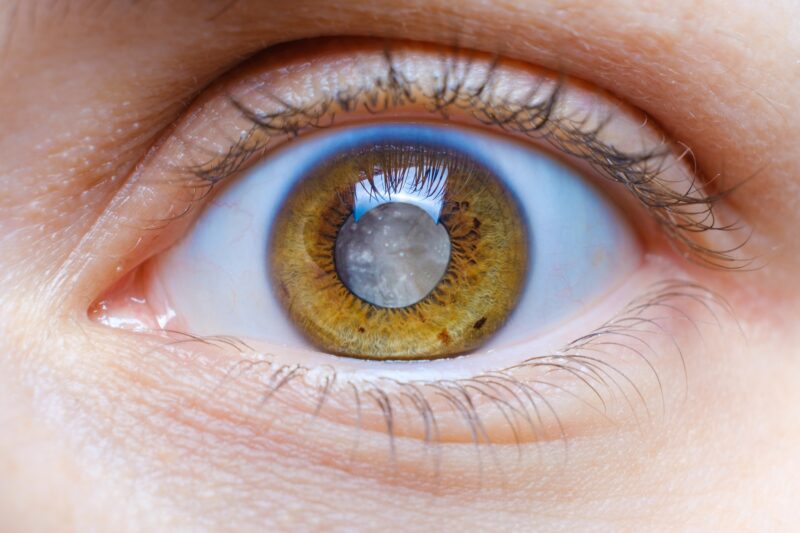Cataract surgery is one of the most common elective procedures in Canada today, with more than 500,000 performed annually. The success rate ranges from 93 to 98%.
In recent years, I conducted my own outcome survey before I decided to undergo bilateral cataract surgery in December 2024. I talked to dozens of seniors of all ages about their experiences, and the result of my exchanges with them was a split right down the middle between those who reported that cataract surgery was the best thing they could have done, and others who shared that their vision has not been the same since. Blurriness after the surgery was the most common complaint.
According to research by the Conference Board of Canada, it is estimated that the demand for these medical interventions will grow exponentially by 2040. This makes sense given that most cataract surgeries are performed on seniors 65 or older, our fastest-growing demographic.
The surgery itself is a procedure involving the removal of the cloudy lens of the eye, and replacing it with a clear lens implant. Its cost is covered under health insurance plans, but specialty lenses are not, and payment for those is required prior to the day of surgery.
There are risks with all surgical interventions and medications
While cataract surgery is generally safe and effective, there are some risks and side effects, and these include: blurry and unclear vision, dry eye (resulting from a small number of nerves on the surface of the eye that get cut when the surgeon makes the necessary incisions to reach a foggy lens), light sensitivity, arc of light or crescent-shaped shadow in the post-surgery visual field, red eye normally caused by inflammation, floaters or flashes of light in the field of vision, and droopy or twitching eyelids.
After cataract surgery, steroidal drops must be applied for several weeks to ensure the best outcome, and these come with side effects of their own. In my case, I was prescribed Vigamox, Prednisone and Acuvail drops, and all three caused some discomfort. I even developed an allergic reaction to the Acuvail, which resulted in a serious rash down my neck after I spilled a few drops. I stopped using it after that.
Vigamox can cause eye irritation and pain, blurred vision and dry eye, while the possible side effects to Prednisone include backache, blindness, burning, dry itchy eyes, change in vision, decreased vision, difficulty focusing and drooping of the upper eyelids.
Although Acuvail can cause all of the side effects associated with Vigamox and Prednisone, it can also bring about redness of the clear part of the eye, sensitivity to light, swelling of the eye or the eyelids, throbbing pain and tearing.
Pre-existing conditions might affect your outcome
Individuals who suffer from pre-existing health issues may be more at risk of post cataract surgery complications. I had issues with dry eye and sensitivity to light for over 20 years prior to surgery, as well as with astigmatism, a condition defined as a variation in the shape of the cornea which causes blurred vision at all distances, making my research into the procedure all the more important.
Cataracts are the second leading cause of blindness in Canada, so if your vision becomes cloudy and you are no longer able to focus or drive safely at night, it may be time to consider surgery. Informed discussions with a surgeon can help you decide on the timing
Be proactive
As people age, their eyes change, and various eye conditions may develop. Regular eye exams for cataract awareness can become your best strategy.
Expect honesty from your surgeon, and don’t be shy about discussing any fears you may have about the procedure. I certainly had a few concerns as my late father’s experience was problematic, to say the least. During his first cataract surgery, the implant was accidentally dropped behind his right eye, and a retinal specialist was called in to perform a second procedure to retrieve it. He lost his sight in that one eye two days later, and he decided against having the surgery done on his left eye. For him, it was a good decision that I supported.
The opportunity to be glasses-free is appealing to a lot of patients, but they should know that many among them will still require corrective eye glasses.
Make an informed decision about upgrading to a premium lens. Upselling specialty lenses may be common practice, but if it was determined at your first consultation with the surgeon that the OHIP covered lens would be satisfactory to your needs, you may not need to go out-of-pocket for a more expensive lens.
Happy ending
Though my recent cataract surgery did set me back with dry eye and light sensitivity issues, my new tinted glasses, weighted mask for relaxation, and the preservatives-free Hylo drops are now providing much relief.
It’s likely that I will continue to have challenges with my vision, but I have my life back now that I can read and work from screens again.
Most importantly, I can go for walks in sunlight, and that’s one of the best outcomes I could have hoped for!
Lise Cloutier-Steele is an Ottawa writer and the author of There’s No Place Like Home: A guide to help caregivers manage the long-term care experience available from www.ottawacaregiver.com.






